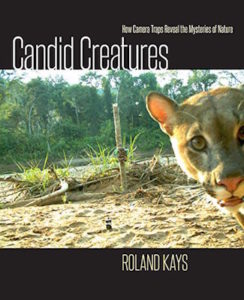 Some years back, between my careers at Leupold and Celestron, I earned part of my daily bread as a consultant to nature-oriented product companies. One of these was a small division of Moultrie called Wingscapes that produced motion-sensitive cameras designed to appeal to backyard bird watchers. From this, I actually think I learned just as much about the value of “camera traps” (as my British friends call them and as their increasingly now called by field researchers around the world) as I was able to offer the company about marketing to bird watchers.
Some years back, between my careers at Leupold and Celestron, I earned part of my daily bread as a consultant to nature-oriented product companies. One of these was a small division of Moultrie called Wingscapes that produced motion-sensitive cameras designed to appeal to backyard bird watchers. From this, I actually think I learned just as much about the value of “camera traps” (as my British friends call them and as their increasingly now called by field researchers around the world) as I was able to offer the company about marketing to bird watchers.
Which is why I was so keenly interested to learn more once I received the initial press kit for Roland Kays’ new book on the subject from Johns Hopkins University Press titled Candid Creatures; How Camera Traps Reveal the Mysteries of Nature. These cameras are now so integral in biological field research that it’s important for all naturalists to get at least a basic understanding of how they work and what they can show about animal behavior – and even plants (time-lapse is a setting some of these cameras can also record) – when they are not under stress from a human observer.
Needless to write, I’m very interested to discover what Kays’ has compiled in this book.
If you enjoyed reading this, please consider signing up for The Well-read Naturalist's newsletter. You'll receive a helpful list of recently published reviews, short essays, and notes about books in your e-mail inbox once each fortnight.
